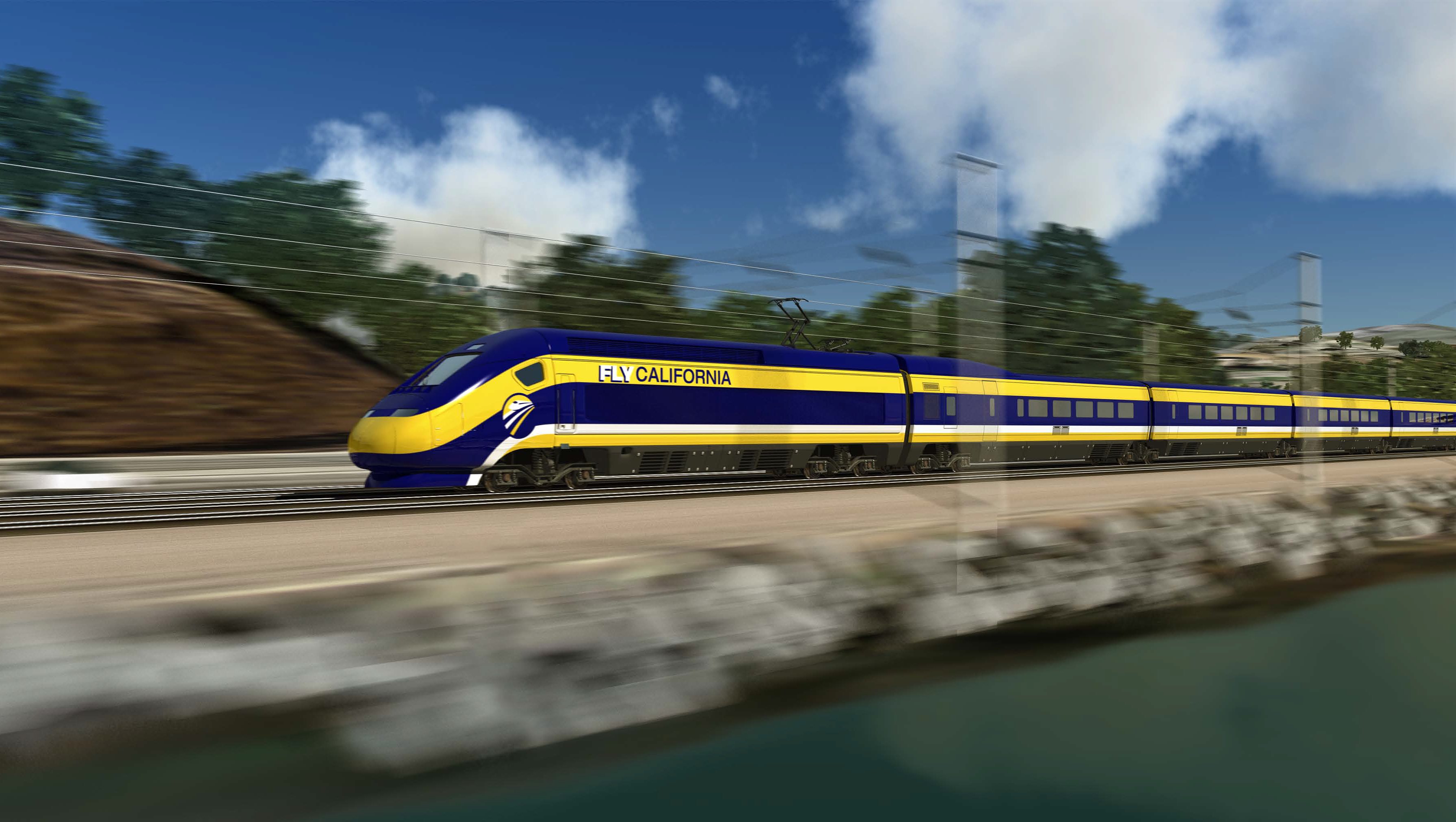By Dan Walters.
Ten years ago, California voters approved – very narrowly – a $9.95 billion bond issue to partially finance what was described as a $40 billion high-speed train system linking the northern and southern regions of the state.
Since then, construction has started on a 119-mile starter line in the San Joaquin Valley, from Madera to an orchard near Bakersfield.
However, the project as a whole has undergone numerous revisions of scope, timing and costs.
At first, the plan was to extend the San Joaquin Valley stretch southward to Los Angeles, but that was scotched when the difficulties and costs of traversing or tunneling through two mountain ranges and local opposition proved daunting.
Instead, it was decided to extend the San Joaquin Valley segment to San Jose and connect with an upgraded commuter rail line to San Francisco.
The latter, dubbed a “blended system,” was decreed because opposition to noisy high-speed trains through the very wealthy San Francisco Peninsula could have been fatal.
However, switching to a blended system, with lower-speed service between San Francisco and San Jose, would also make it virtually impossible to meet the 160-minute travel time between San Francisco and Los Angeles promised in the 2008 ballot measure.
Last week, the High-Speed Rail Authority issued its latest “business plan” that supposedly lays out how the bullet train would be completed.
The cost estimate, which had once ballooned to about $100 billion before being dropped back to about $65 billion, has once again risen to $77.3 billion, or just about twice the 2008 figure.
The 160-minute travel time has been banished from the newest plan in favor of three hours, more or less, but with the blended system, even that higher figure seems highly unlikely.
Although voters were told that the $9.95 billion would be taxpayers’ only burden for the system, hopes for massive federal or private investment have faded. Therefore, the latest version would build the line to San Jose by using the project’s 25 percent share of proceeds from the auction of greenhouse gas emission permits, known as cap-and-trade, to secure a loan from somebody.
California consumers thus would be tapped, through their utility bills, gasoline purchases, etc, to pay for the bullet train, an indirect form of taxation. And to make the projected loan work, the business plan says, cap-and-trade would have to be extended from the current 2030 to 2050 and the state would also have to give the lenders some guarantees for backup payments.
It should also be noted that while cap-and-trade auction proceeds are supposed to be used for projects that reduce greenhouse gas emissions, the bullet train, by official estimate, would reduce automotive travel by just 1 percent, even if fully built out.
Finally, the plan assumes that once passengers were riding between San Francisco and Bakersfield, the system would generate enough profit from fares to finance extension to Los Angeles. That assumption counts on as many as 31.7 million passengers during the segment’s first full year, 2033, or roughly as many who board planes in the Dallas-Fort Worth Airport each year. Realistic or wishful thinking?
The 2008 ballot measure assumed that the system would be completed, including service to Anaheim, by 2030, but the new plan barely sees very limited service on the San Jose-Bakersfield portion by then.
There obviously are a lot of uncertainties in the new business plan. But even if all are resolved, the bullet train still looks like a solution in search of a problem, rather than a vital transportation system.
California has no shortage of transportation problems, but traveling between San Francisco and Los Angeles isn’t one of them.
[divider] [/divider]





